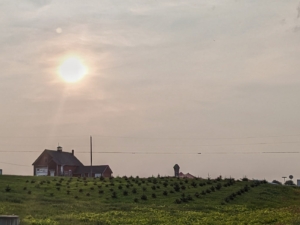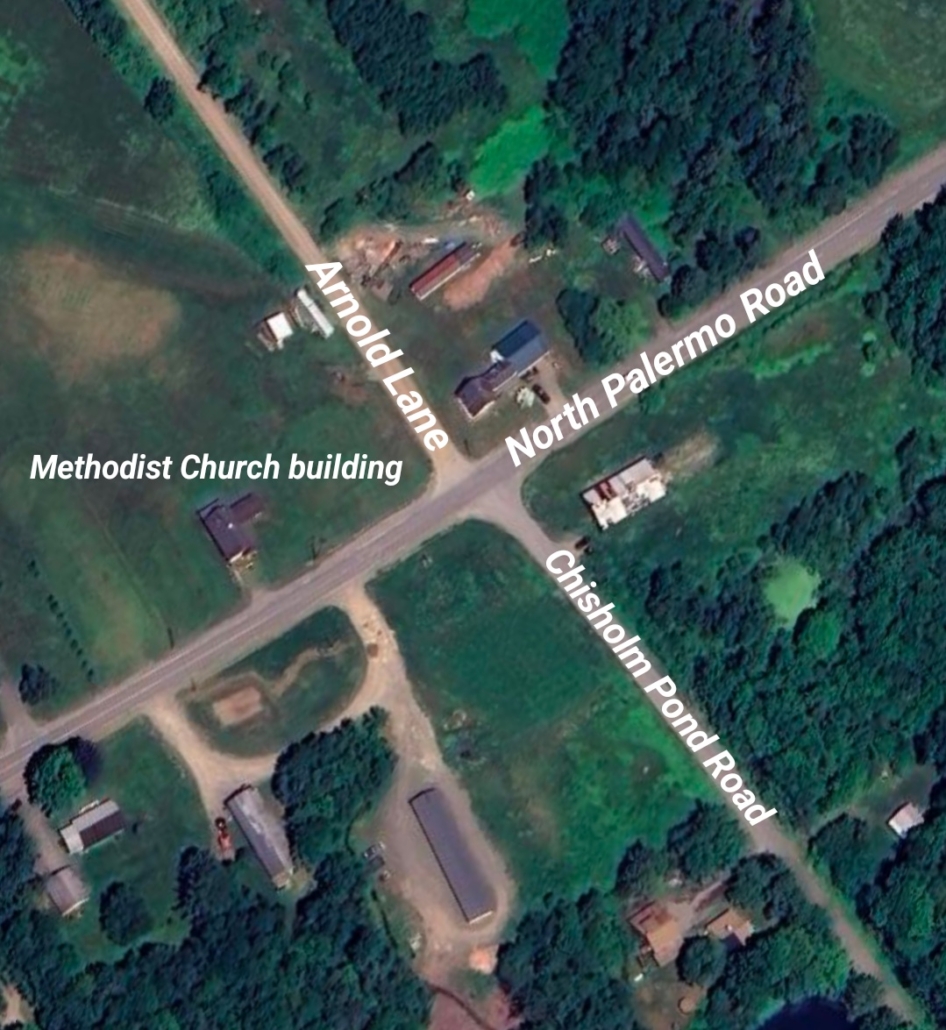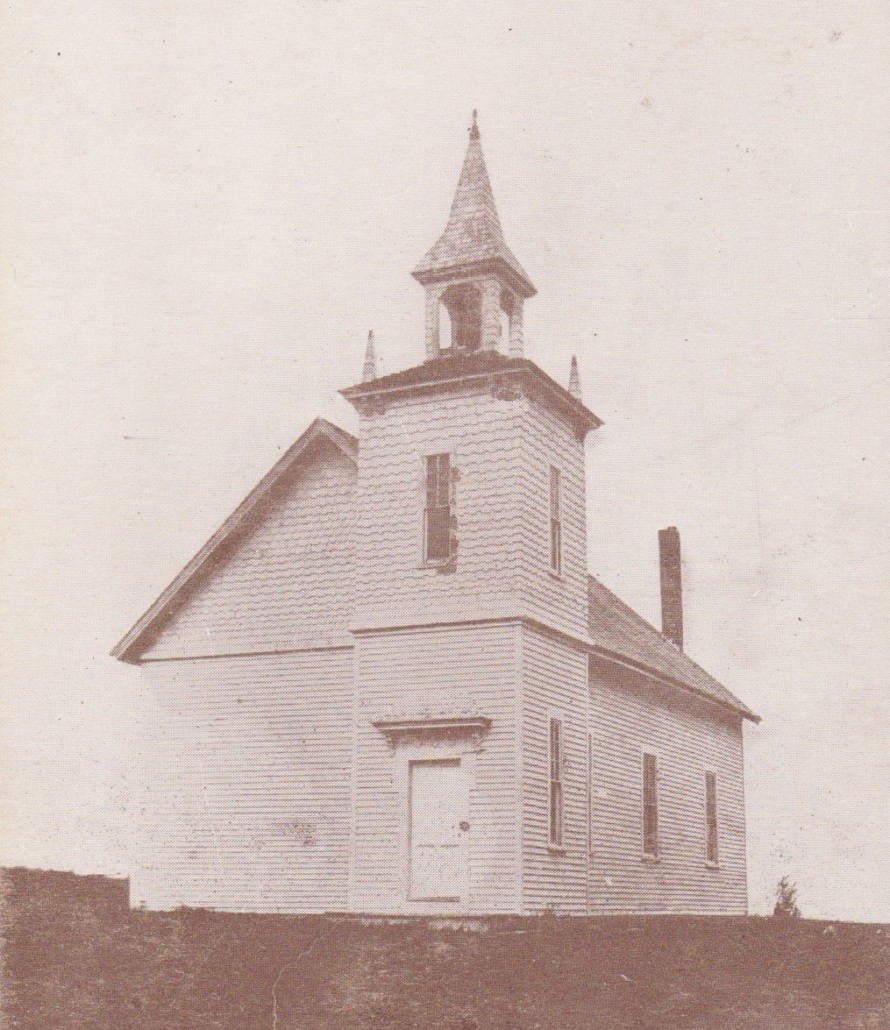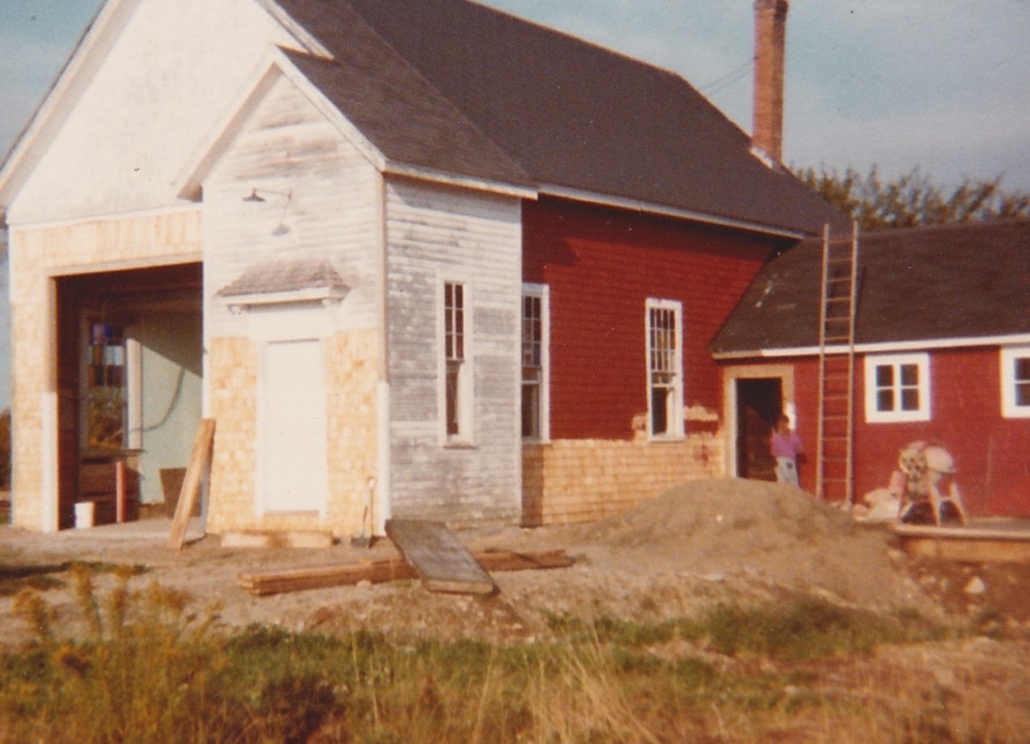Around the Kennebec Valley: A history of Ford’s Corner, Part II
by Andy Pottle
In Part 1, we explored the lives of three key families at Ford’s Corner around the turn of the 20th century: Frank & Addie Wood, Daniel & Nettie Batchelder, and Leander & Alice Bowler, all active members of the church at the corner of Chisholm Pond Road and Arnold Lane. Part 2 will explore the history of that church building and what Ford’s Corner is today.
In Lee Bowler’s obituary, it was said he was “instrumental in building the Methodist church,” but the history of the church on the corner starts about a decade and a half before he moved there.
According to Allen Goodwin’s A History of the Early Settlement of Palermo, Maine, Methodists had been meeting in North Palermo since 1830. Initially gathering at Dr. Eli Ayers’ Grove, where Level Hill Road meets North Palermo Road, and later at the “Clifford School House”, most likely somewhere around where Chisholm Pond Road meets the Hostile Valley Road.
In 1859, the congregation purchased a house, raised it off the ground, and rotated it so that the end faced the road. Once enough pledges were secured, Reverend C. E. Springer led the effort, alongside other church members, to raise the roof by 11 feet, and then ventured into the woods to cut rafters for the new roof. The interior of the newly expanded chapel was then plastered by Jason Wood, the great-uncle of Frank Wood (see part 1).
By 1891, the building had deteriorated to the point of being described as “decayed and dilapidated,” and “thoroughly uncomfortable and unsuitable for use,” according to an issue of Zion’s Herald, a Methodist newspaper.
At that time, the reverend was George J. Palmer, a carpenter and architect. Palmer “knew just what needed to be done with the old structure, and the most economical way to do it.” and got to work planning the renovation.
After several church fundraisers, donations, and a loan from Lee Bowler, Palmer got to work, doing much of the renovation himself. The structure was expanded, the belfry was built with a bell installed, and the church was neatly finished and painted white.
Thanks to the efforts of Bowler, Palmer, and others, this community had a meeting place for regular Sunday services, weddings, and funerals for years to come. It also hosted various events, such as Christmas concerts and talks by traveling speakers.
In 1948, the people of the community and other towns came together again to keep the old building alive. By this time, the church grounds included a second building, the Ladies Aid building, where a supper was served to raise money for repairs to the steeple and for painting the church. Paul Wellman and Arthur Hurd donated lumber and shingles, respectively. By this time the community in North Palermo was made up of both old and new families, and some of the families documented to have helped in some way with this renovation include Besse, Brown, Bryant, Bukner, Coffin, Davis, Dowe, Dyer, Glidden, Howell, Hurd, Nelson, Norton, Palmer, Pottle, Sabin, Soule, Wellman, Willoughby, and Young.
Ten years later, in 1958, the church buildings were purchased by the North Palermo Baptist Fellowship after the First Baptist Church down the road at Carr’s Corner had been torn down a few years earlier. In an effort to revive rural churches that had fallen by the wayside, the Waldo Larger Parish assigned Miss Barbara Rozelle as pastor. She split her duties between the newly established North Palermo Baptist Church and the Second Baptist Church in East Palermo until she was succeeded by Eric Wiggin Jr. in the mid 1960s. Eric Wiggin Jr., the great-grandson of the aforementioned Frank Wood, never knew that the brother of his great-great-great-grandfather had plastered the walls of this very church over 100 years earlier when it was first converted into a chapel.
In 1968, some members of the North Palermo Baptist Church joined with members of the East Palermo Baptist and Branch Mills Union Churches to form the Palermo Christian Church. By 1969, under the leadership of Pastor Fred Williams, it became clear that the original church building was no longer adequate for the growing congregation. According to the history of the Palermo Christian Church, “about 75 Sunday School students were crowded into four classes, one of which met in the Ladies Aid House, while the other three gathered in separate corners of the small sanctuary.” The lack of running water and modern restroom facilities also contributed to the decision to construct a new church building. The new church was built on Branch Mills Road near Route 3, where the congregation continues to meet to this day.
Pastor Fred Williams recalled the challenging process of removing the old bell from the tower. Fred, along with Church members Neal Pottle and Colin Dyer had tied a rope around the heavy bell and began lowering it down the building. Halfway down, the rope snapped, causing the bell to crash down and embed itself a few inches deep into the ground below. Despite this setback, they managed to retrieve the bell and move it to the new church building, where it still resides.
In the 1970s, the building was sold and briefly owned by the Palermo American Legion. Due to its poor condition, the steeple was removed, along with most of the belfry.

View of the old church building and Christmas tree farm at Ford’s Corner from Chisholm Pond Road, 2024.
In 1979, Neal Pottle purchased the building and undertook a major overhaul to transform it into what it is today. With the help of family and friends, the building was once again lifted off the ground, this time to pour a concrete foundation, replacing the old, dilapidated wooden floor. A garage door was installed in the front wall of the sanctuary, which was repurposed as Neal’s garage. The Ladies Aid building, which had sunk into the mud over the years, was lifted, moved next to the main building, and attached as a machinist shop, equipped with a metal lathe, drill presses, and a Bridgeport mill, among other tools. The siding was replaced with wooden shingles and painted a classic barn red. The cupola and light on top of the building wouldn’t be added until 2008.
In 1985, Neal’s son Ken Pottle started a printing company in the building. A door was added to the top of what remained of the old bell tower, and the space above the former sanctuary was converted into a working print shop. A panel was cut out of the front of the building, allowing printing presses to be moved in using a hydraulic wood loader.
Pottle’s Printing, and later Archer and Pottle’s Printing after Jeff Archer joined as a partner, served local businesses by printing flyers, business cards, and other paper goods. The company also printed the town reports for Palermo from 1985 to 1988 and launched a short-lived community newspaper in 1986, predating The Town Line by three years!
After the print shop moved in 1990, Ken and Neal repurposed the space into a woodworking shop, which has been enjoyed by the Pottle family and their friends ever since. When Neal passed away in November 2023, his casket was built in the woodshop at the top of the old church. He was laid to rest in Smith Cemetery, alongside Leander and Alice Bowler, Frank and Addie Wood, Daniel and Nettie Batchelder, and many others who had lived in North Palermo and spent their time at Ford’s Corner.
Today, the only buildings still standing at the corner are the old Wood residence and the former Methodist Church. The Bowler home, and outbuildings were lost to a fire in 1932, with the Bowler Barn surviving until the ‘60s.
In 2007, Doug Wellman built North Palermo Self Storage on the back corner of what was once the Bowler farm, using lumber milled on-site where the Bowler house had once stood.
In 2022, Randy Pottle planted a Christmas tree farm with 200 trees on the site of the former house and general store, extending behind it. He plans to use the proceeds from the tree sales to buy his grandchildren, Ava and Norman, their first vehicles, by the time the trees (and the grandchildren) are big enough in 2032, 100 years after the house burned down!
The old Batchelder house, which later was home to Neal Pottle’s parents until his mother’s death in 1989, remained at the corner until 2008 when both Neal’s father and the house were lost to a fire.
In the back field behind the property there is an airstrip built by the late Gerald Pottle, brother of Neal, when he purchased his yellow Citabria airplane in 1977.
At the site where the Batchelders once held meetings for the annual Palermo Picnic a century ago, another event now brings hundreds to North Palermo each August from across Maine and beyond.
Neal and Theresa Pottle started the Family and Friends Bluegrass Festival in 2008 to showcase local talent from the Bluegrass Jam hosted at their house every Friday night. The Festival has grown over the past 17 years into a three-day event that has featured music, workshops, contra dances, kids’ activities, food trucks, and more. On the third weekend of each August, the field between the runway and the now-red Methodist church fills with campers and tents from as far away as Georgia and South Carolina.
With the sounds of Bluegrass jams coming from the campsites and laughter from the children’s area beside the old church building, Ford’s Corner once again feels like the center of a community in North Palermo, if only for one weekend a year.
Sources:
Newspaper archives of Kennebec Journal, Morning Sentinel, Belfast Republican Journal, Lewiston Evening Journal
Conversations with Eric Wiggin Jr., Fred Williams, Neal Pottle, Ken Pottle, Ed Hatch, Lindsey Pottle
A History of the Early Settlement of Palermo, Maine, by Allen Goodwin
Zions Herald, September 2 1891
Responsible journalism is hard work!
It is also expensive!
If you enjoy reading The Town Line and the good news we bring you each week, would you consider a donation to help us continue the work we’re doing?
The Town Line is a 501(c)(3) nonprofit private foundation, and all donations are tax deductible under the Internal Revenue Service code.
To help, please visit our online donation page or mail a check payable to The Town Line, PO Box 89, South China, ME 04358. Your contribution is appreciated!








Leave a Reply
Want to join the discussion?Feel free to contribute!